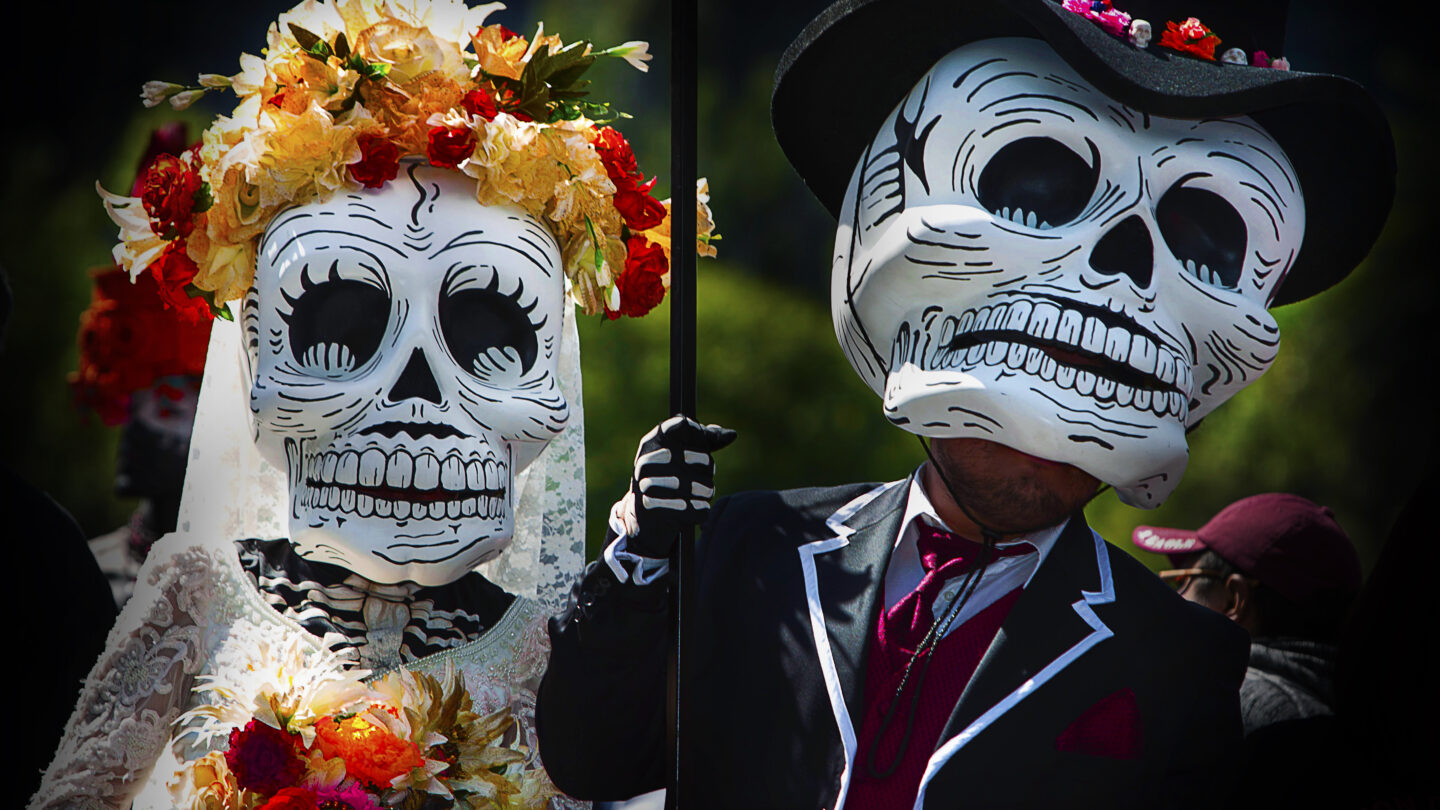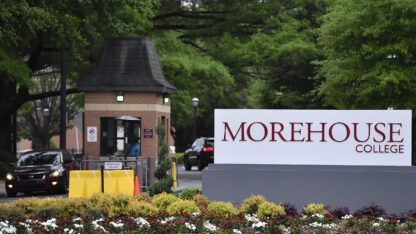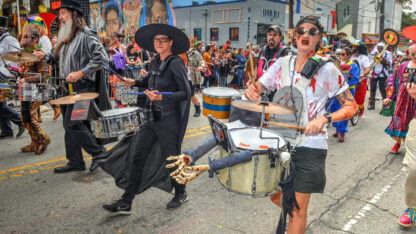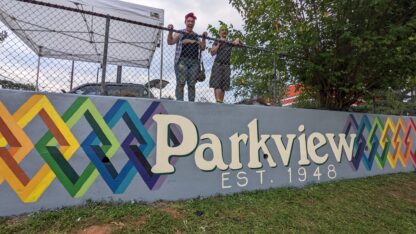The pairing of Historic Oakland Cemetery and the Mexican holiday Day of the Dead is a marriage made in Heaven, so to speak. On Día de los Muertos, or Day of the Dead, families honor their deceased loved ones through joyous celebration, as it’s believed that the veil between the spirit world and the real world thins — so that the souls of the dead can reunite with the living and celebrate. On Nov. 6, Atlanta’s Historic Oakland Cemetery will host its first-ever Day of the Dead Festival. The Honorable Javier Diaz de Leon, Atlanta’s Consul General of Mexico, and Oakland Cemetery Director of Special Events Mary Fernandez spoke with “City Lights” host Lois Reitzes about the holiday and upcoming festivities.
Interview highlights:
A brief history of Día de los Muertos:
“As is the case of so many traditions and so many of our cultural traditions in Mexico, it is a mixture of indigenous pre-Hispanic traditions that came way before Europeans landed on the shores of Mexico and the Americas,” explained De Leon. “When colonization happened, in the case of Mexico by the Spanish crown, there was a mixture of those traditions that were originally originated by Hispanic cultures and some of the traditions, of course, that came with Spaniards — mostly religious and mostly, of course, Catholic.” He went on, “One of the ways that the Spanish crown dealt with [the indigenous holiday] was to assimilate it into the Catholic faith, so that’s how it was assimilated … One of the Western Catholic elements is … the pairing with All Saints Day.”
“It’s all about paying tribute and paying homage to family and to dead people who have passed away, to our forebears, and it’s a celebration. It’s not about scaring anybody. It’s not about horror. It’s not macabre at all,” said De Leon. “It’s more like a celebration of a night in which, according to the traditions of the indigenous cultures in Mexico, those members of our family who have passed away come back during the night between November 1st and November 2nd. During that night, their spirits come and there is a joyous celebration of a gathering with them.”
On the “ofrenda” altars to be displayed:
“A core part of the celebration, it is a representation, an exhibit of altars,” De Leon said. “The tradition involves, basically, paying homage to family members who have passed, and these altars are the way to do it. So it means basically setting up an altar with elements in there — it might be food, it might be other elements there that have a connection to the person that we are paying homage to … We’re going to have over around 20 altars that are being prepared by several members of the Latino-Mexican community, but also by non-Mexican members of the community … and they’re going to be part of a very large exhibit in this festival on November 6th.”
“I’m really looking forward to highlighting the similarities in the ways that people mourn and grieve and memorialize their loved ones. I think there’s a fairly direct connection to the act of setting up an altar and to the act of building an eternal home for your family. And so showcasing the similarities, I think, is going to be a really wonderful opportunity to bridge a lot of, perhaps, gaps in understanding,” said Fernandez.
Live music, food, mausoleum tours and costume contests:
“Of course, there will be mariachi bands. We’re going to have members of the Atlanta Symphony Orchestra,” said De Leon. “For the first time, the Navy Band from the Southeast is going to be performing, and we’re going to have singers. There’s going to be a contest of Catrins and Catrinas… We are encouraging people to dress up.” He added, “Catrina are a very popular portrayal that you might have seen around, of a skull dressed in elegant clothing, sometimes with a big top hat. If it’s a lady, with a very nice long dress.”
De Leon also explained, “Some of the food that is used in the altars, and some of the food that we in Mexico buy and eat during this time of year, is very specific. Probably the most famous one is the bread of the dead, pan de muerto, which is a special kind of sweet bread that is used in the altars, and it has a very distinctive form. And of course, a lot of that bread will be available.”
More on Historic Oakland Cemetery’s Día de los Muertos celebration on Nov. 6 can be found at oaklandcemetery.com/event/dia-de-muertos.









